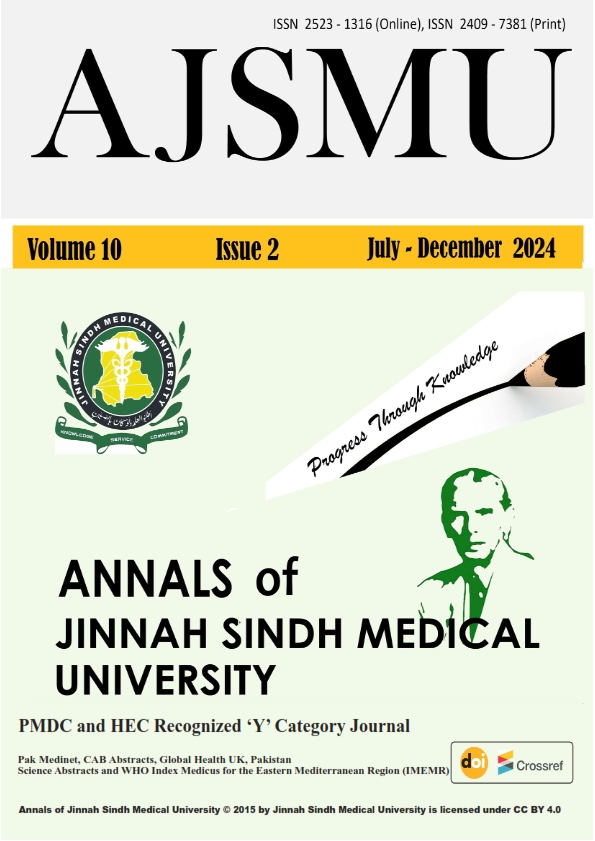Effectiveness of Diode Laser Powered Adenoid Gland Ablation in patients with Adenoid Hyperplasia
Abstract
Objective: To evaluate the surgical efficacy of diode laser ablation of adenoid gland hyperplasia in terms of
improvement in surgical technique, clinical symptoms and quality of life.
Methodology: In this study, we found out the results of diode laser ablation in the adult population who
present with adenoid hyperplasia with grade 2 enlargement from the grading system of Parikh et al., Diode
laser ablation was done under general anesthesia. Patients with grade 2 hypertrophy were diagnosed with
endoscope and after informed consent laser ablation was done under general anesthesia .Postoperatively
patients were followed ,examined and pro forma were filled.
Results: Results were analyzed on preoperative and postoperative endoscopic findings, improvement in
symptoms of nasal obstruction, intraoperative blood loss, duration of surgery and postoperative complications.
Results showed that diode laser effectively ablated adenoid tissues with less complications better surgical
technique and improving symptoms and quality of life. Please mentions specif resuts in stats
Conclusion: It was observed that endoscopic laser ablation was better in terms of minimal blood loss, can
be performed in less surgical time, and improves obstructive symptoms. There was no significant postoperative
complication.
Key Words: Adenoid hyperplasia, diode laser ablation, endoscopic grading system, OSA obstructive sleep
apnoea
Copyright (c) 2024 Annals of Jinnah Sindh Medical University

This work is licensed under a Creative Commons Attribution 4.0 International License.


